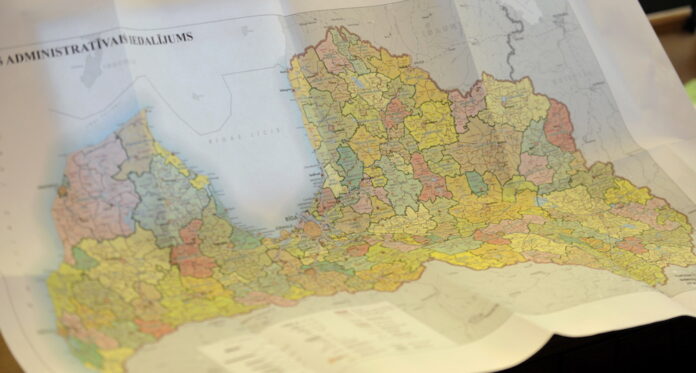European statistical office Eurostat predicts that Latvia’s population numbers keep going down. It is expected that between 2022 and 2070, Latvia’s population will have declined to 1.3 million, according to information from the report from the Ministry of Welfare on the situation with the demographic situation in the country.
Above all, the demographic situation is characterized by a decrease in the birth rates and an increase in life expectancy. The report concludes that the demographic situation in Latvia is currently characterized by a negative natural population growth. There is also an increase in the average life expectancy, which contributes to the ageing of the population and an increase in the demographic load.
The natural growth of Latvia’s population has been negative since 1991. It reached its highest negative point in 2021.
In turn, the net migration or the difference between the number of arrivals (immigrants) and departures (emigrants) has been negative since 1989. Two years ago, however, a positive net migration was recorded,
which was mainly influenced by the number of arrivals of Ukrainian refugees.
At the same time, since 1993, the proportion of the population over the working age is higher than that of children and adolescents. This means that in the future there will be a smaller population of working age and the level of demographic workload will increase, the ministry concluded. The report indicates that the decrease in the number of the working-age residents in Latvia has been significantly influenced by migration, as a result of which the load on the social insurance system will continue to increase in the medium and long term. Therefore, the demand for health care and long-term care services is expected to increase significantly.
At the same time, the desired value of the total fertility rate of 2.1 to 2.2 decreases rapidly in Latvia. This indicator, in the opinion of the ministry, is necessary for “normal generational renewal”, and it has not been achieved in Latvia since 1990. Last year, a total of 14 490 children were born in Latvia, which is 9.2% less when compared to 2022 and 16.8% less when compared to 2021. Birth rates continue going down more and more rapidly and is at its lowest point in the past 100 years, the report stresses.
Data from the ministry also indicates that in Latvia, the average age of both the mother and the father of the newborn is increasing. The mother’s average age last year was 30.4 years. The average age at birth of the first child was 28 years, while at birth of the second child – 31.2 years. Last year, the majority of children were born when their fathers were 32 years old.
In Latvia, when compared to other EU member states, children are born to mothers of a younger generation, the ministry reports. Although the number of children born is decreasing, the proportion of children born as the third or fourth child in the family has been increasing in recent years.
However, a negative trend that could adversely affect the economic situation is a decrease in the number of women of childbearing age. As a result, a situation may arise that during the period of economic growth, the total absolute number of newborns may not increase due to the reduced number of women of childbearing age.
According to Eurostat’s demographic projections on trends in birth, mortality and migration rates, men’s life expectancy in Latvia in 2070 will increase to 82.5 years, which is 12 years more than the projected duration in 2022. In turn, women’s life expectancy over the same period will increase from 79.8 to 88.4 years.
As the population ages, a small number of employees will have to provide pension costs for a large number of pensioners, as well as health and long-term care needs. Therefore, at EU level, emphasis is placed on the need to make the most of the potential of our workforce in order to address the issues related to the ageing population and to increase competition on a global scale, emphasizes the ministry.
LM has formulated three directions to improve the demographic situation in Latvia. In the direction of action, it is planned to find additional funding for support measures for the child’s entry into the family and for raising the daily and household level of families. The report indicates that access to housing and childcare services, medical services, as well as other physical and financial support tools should be improved, along with social, psychological and informational support. Improving economically active and healthy life expectancy is also a priority.
The Ministry also emphasizes the potential of re-migration to improve the demographic situation, recognizing the need to provide informational support and active cooperation with the diaspora. Until now, economic motives of emigration have prevailed in Latvia, indicating the dissatisfaction of the population with income, living conditions, working environment, thus it would be important to focus the national policy on the reduction of external migration, as well as the re-migration-boosting measure, stresses the Ministry of Welfare.
Also read: Latvian pupils know about mental health, but have difficulty with survival in extreme situations
